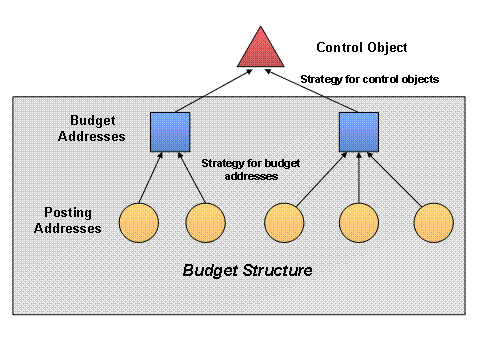Critically Evaluate the Use Budgets in the Modern Business World
Research Title: Budget Plans. The Proprietors are always obliged to carefully plan and audit their find if they are to maintain their businesses regularly. For recognizing, measuring and calculating and reporting finance data, organisations rely upon accounting software. Moreover, there are others tools which incorporate planning, monetary proclamation, estimation and different apparatuses for the overseeing of finance data. Out of all the accounting tools used by organisations, businesses budgeting ones are the ones that are seen as the exceptional ones. What “Budget” entails is an incisive analysis of the organisation’s future spending strategy and plans.
Most organisations try to create their yearly budget plans on a yearly basis so that take into account every spending need in that office. A yearly budget plan entails that capitals assets that the organisation would try to acquire would not be easily done so because of the confines on the time. Small organisation differs from the big organisations in the sense that they are able to complete their budgets plans without having to consult experts in the field.
Knowing a budget means that you will not hastily spend money on operations that are relatively unimportant or of least priority, similarly having a budget ensures that the precious capital is properly used on only those economic resources that are worth your time and money. This naturally entails that the business organisations and owners may have to check for alternate sources of supply or vendors, and cutting down miscellaneous costs. Having a budget properly mapped out gives the company a sense of direction of how they are going.
It will also mean that you are able to bring about a comparison with the budgeting that happened the previous year and where and how the discrepancies occurred and if there is a way to resolve them. In the case of a budget fluctuation that had occurred due to an unexpected incident, such as an increment in the sales income, then it is not necessarily a negative business circumstance, instead, it is an opportunity, for the organisation to create to recollect and build a monetary allowance sum for future deals and increments.
This is where the flexibility of the budgets comes into the limelight, as it is capable of being edited into a plan which prepares the organisation for any imminent development or extension. The money saved due to budgeting spending can be utilized in the way of injecting it into a store account which is used to finance the selection of new business opportunities. This type of planning ensures that when the scenario arises when you have to close a deal to ascertain a possible expansion in business operations, it can be done without having to scramble for finances.
These extra capital saved can be utilized during times when there is a moderate progress for financing operational expenses. With the aid of an accounting or business program, organisation will be able to, more efficiently, create budget plans that allow them to plan their finances and monitor costs. Similarly, it is possible for them to create a better accounting plan or procedure that makes it possible for creating and overseeing spending plans, by virtue of data gathering. Therefore, software such as these is imperative for budgeting and data collection in a consistent and constant arrangement.

Critically Analyses the Figures Shown in the Cash Budget
After careful examination of the monetary proclamation of Ground Ltd, it is inferred that the records receivables are consistent at Euro 464,480; therefore, there is no visible variance or occasional ones in deals. There at least 6 turns of the record receivables during a year, or during regular intervals, they turn at least once. The Stock during this time is constant at about Euro 484, 480 and only turns over at regular intervals.
On the other hand, the records payable have a tendency to turn over at least eight times a year, like clockwork. The time for records receivables is about 60 days and the equalization remarkable stays at Euro 484, 480, which gives the impression that Euro 464, 000 is the sum that is ought to be gathered on the receivables after 90 days. From such a point of view, a stock of Euro 1,000,000 at retail that turns on regular intervals and Euro 750,000 traverses the records receivable, and then it is imperative that about Euro 250,000 ought to be the amount that is sold on money premises alone.
Installments
It is estimated that the costs for money installments is 150,000 Euros for the coming 90 days. One can easily check this figure if they were to allude to the pay articulation costs. If there happens to be a measure of the money costs that is relatively unpleasant, so to speak, then it can be acquired by a deft utilization of working costs minus non-money costs, i.e., devaluation. In a scenario where there is no regular variable at work, then it is often the case, that he aggregate sum is divided by four, which will in turn keep an eye on the sum planned for the subsequent 90 days.
Cash budget, will have an estimation of the anticipated sources as well as the purpose and use of the future cash costs. This purpose of the budget is to give a measurement of the cash needed to meet anticipated money necessities. If it is not possible, then it is up to the administration to find new sources of income and cash, and the inputs are only gathered from a small collection of different budgets. When the trade spending plans is spent upon, all that remains will be used for the financing the future budget, that in turn organizes ventures, debt, interest salary and expenses.
There are two areas of the cash budget – the sources of cash and the uses of cash. The former consists of the starting money equalization, cash money receipts, debt claim collections, and offer of advantages. The former consists of arranged money uses, start spawn from material budget, direct work budget, overhead budgets and expense budgets that is part of the selling. It will also contain a multitude of details for settled resource purchase and profits to shareholders.
In the unlikely possibility that there exist certain bizarre and extensive trade equalization, they are adequately maintained in the financing budget plan that shows the any possible ventures for them to consider. Similarly, if there exists any negative parity inside the cash budget, then it is inside the financing budget, a clause that details how to manage these equalization by means of stipulating a certain time and measure for this obligation.
In the illustration given, we found that an expert spending plan of organization proceeds here with the planning of calendar of expected money accumulations. The business figures are acquired from the business budget of the organization. 70% of offers are relied upon to be gathered in the quarter in which deals are made and the rest are required to be gathered in the following period. Bad debts are insignificant. Also, an exorbitantly substantial profit installment in the second week of the budget plan, combined with a vast resource buy in the next week, puts the organization in a negative money position.
Paying out such an extensive profit can be an issue for banks, who don’t prefer to issue credits with the goal that organizations can utilize the assets to pay their shareholders and along these lines debilitate their capacity to pay back the advances. In this manner, it might be more astute for the organization to consider a little profit installment and maintain a strategic distance from a negative money position.
Ways in Which Cash Budget Can Be Improved
Balancing cash will occur quite impressively inside a solitary accounting period that will entail the concealment of cash which is often quite fatal for many organisations. In order check the arising of such situations, then it is necessary for maintain a cash conjecture on a weekly basis. These transient plans are sensible for only a month, but then the ability to anticipate any occurrence of delays quickly vanish, and then the organisation is coerced to plan on a month to month basis. What happens during this tumultuous time is that the plan created is lost in significance after a month and to a great extent absolutely erroneous after two months.
In its least complex structure, income is the development of cash all through your business. It is regularly portrayed as the procedure in which your business utilizes money to create merchandise or administrations for deals to your clients, gathers the money from the deals, and after that finishes this cycle once more.
There are few ways to improve cash budget like making ordering your product for customer easy and by improving commitment and handling well the shipping process. Accelerating the trade change period out this region requires that you utilize the fastest method for conveying your items or administrations to your clients. Superfluous deferrals in the transportation and treatment of your items or administrations can include countless to your money transformation period, also the negative effect this can have on your client connections.
Another important way to improve cash budget is the completion of the invoice properly. Your absence of consideration in this stride can accidentally protract the money transformation period. Your receipt really starts the money gathering process for your finished deals. You’ve presumably made sense of at this point most clients don’t pay without first getting some type of receipt for the products or administrations you sold them. Receipts serve as a suggestion to your clients that your products or administrations have been conveyed. Receipts additionally serve as a suggestion to your clients that they have a commitment to pay you.
Apart from this, you can give some credit considerations to your client. With existing clients or customers, it is best to envision bring up in their credit limit at whatever point conceivable. This can be done by taking a gander at the client’s present credit point of confinement and contrasting it and your normal levels of business with them. You can maintain a strategic distance from postponements in satisfying their request on the off chance that you can settle on your credit choice well in front of the client’s solicitation for an adjustment in their credit limit. Foreseeing existing clients’ credit needs can fundamentally diminish your money transformation period, and awe the clients in the meantime with your eagerness to expand their credit limit.
References
Steven, M 2003, ‘ Budget Economics: Principles in action’. p. 502. ISBN 0-13-063085-3.
Panagariya, A 2008 ,’The Emerging Giant’ p. 514. ISBN 978-0-19-531503-5




